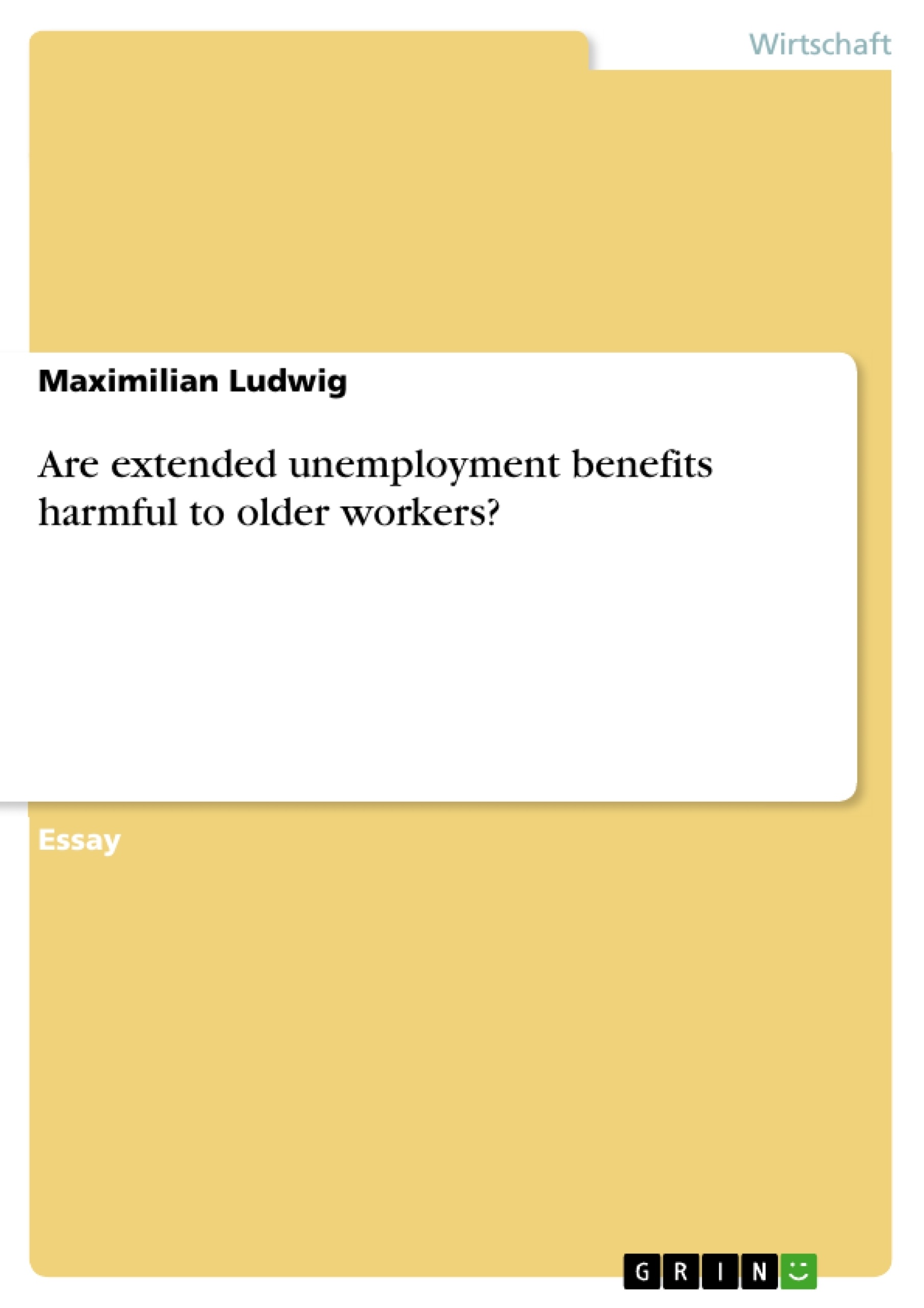Retirement from the labour market takes place regularly on the basis of the statutory retirement age or on the basis of early retirement schemes. In addition, unemployment combined with low chances of continued employment in the labour market can lead older workers to take advantage of state social benefits or early retirement programmes. In the recent past, these programmes have been seen in many EU countries as an exit route from the labour market for older workers - usually from the age of 55 onwards - and as a soft entry route towards regular retirement. This was politically desired and promoted, for example, to create jobs for younger workers. If older workers leave the labour market prematurely and receive state social benefits over a longer period of time - e.g. in the form of unemployment benefits or extended unemployment benefits - this is associated with negative effects. According to the prevailing scientific opinion, extended unemployment benefits promote the duration of unemployment as well as the duration until a new job is taken up. Moreover, the higher the unemployment benefit, the greater the probability that the individual will decide against a job offer on the labour market. Another spectrum of negative effects of early retirement programmes or extended unemployment benefits includes, especially for men, health consequences and a higher risk of mortality. The aim of this paper is to discuss the results of empirical studies focusing on the negative effects of early retirement programmes and to answer the research question: "Are extended unemployment benefits harmful to older workers? ". For the sake of completeness, empirical studies are also presented that prove positive effects of early retirement programmes.
The course of the work begins with the definition of the term "older workers". The second chapter looks at the reasons that justify retirement from employment. In this context, the effect of unemployment benefits and extended unemployment benefits as incentive effects is discussed. The third chapter then focuses on the long-term effects of extended unemployment benefits and early retirement, with the emphasis on negative aspects. Empirical studies on this topic form the basis for this. To complete the picture, empirical studies are discussed that demonstrate positive effects of extended unemployment benefits or early retirement programmes. In the last chapter, the thesis ends with a conclusion and an outlook.
Inhaltsverzeichnis
- 1 Introduction
- 2 Older workers - Retirement from employment
- 2.1 Retirement from employment – reasons.
- 2.2 Unemployment benefits and extended benefits as incentive effects
- 3 Extended benefits and early retirement - long-term effects.
- 3.1 Negative effects on older workers.....
- 3.2 Positive effects on older workers
- 4 Conclusion and Outlook....
Zielsetzung und Themenschwerpunkte
Die Forschungsarbeit untersucht die Auswirkungen von verlängerten Arbeitslosengeldansprüchen auf ältere Arbeitnehmer. Sie analysiert, ob diese Leistungen negative Folgen für ältere Arbeitnehmer haben und inwieweit sie die Dauer der Arbeitslosigkeit und den Übergang in den Ruhestand beeinflussen.
- Definition des Begriffs „ältere Arbeitnehmer“
- Gründe für den Rückzug aus dem Arbeitsleben
- Incentive-Effekte von Arbeitslosengeld und verlängerten Leistungen
- Langfristige Auswirkungen von verlängerten Leistungen und Frühpensionierung
- Positive und negative Auswirkungen auf ältere Arbeitnehmer
Zusammenfassung der Kapitel
- Kapitel 1 stellt die Thematik und den Forschungsgegenstand vor. Es werden die aktuellen Debatten über den Rückzug älterer Arbeitnehmer aus dem Arbeitsmarkt sowie die Rolle von Arbeitslosengeld und Frühpensionierung beleuchtet.
- Kapitel 2 definiert den Begriff „ältere Arbeitnehmer“ und diskutiert die Gründe, die Menschen dazu bewegen, aus dem Arbeitsleben auszuscheiden. Dabei werden insbesondere die Auswirkungen von Arbeitslosengeld und verlängerten Leistungen als Anreizmechanismen betrachtet.
- Kapitel 3 analysiert die langfristigen Auswirkungen von verlängerten Leistungen und Frühpensionierung auf ältere Arbeitnehmer. Im Fokus stehen dabei negative Aspekte wie die Verlängerung der Arbeitslosigkeit und die Gesundheitliche Folgen. Es werden auch positive Effekte, die durch Frühpensionierung entstehen können, betrachtet.
Schlüsselwörter
Die Forschungsarbeit konzentriert sich auf die Themen „ältere Arbeitnehmer“, „Arbeitslosengeld“, „verlängerte Leistungen“, „Frühpensionierung“, „Incentive-Effekte“, „negative Auswirkungen“, „positive Auswirkungen“ und „Empirische Studien“. Die Ergebnisse der Forschung liefern wertvolle Erkenntnisse für die Politik und die Gestaltung von Arbeitsmarktpolitik im Kontext des demografischen Wandels.
- Quote paper
- Maximilian Ludwig (Author), 2021, Are extended unemployment benefits harmful to older workers?, Munich, GRIN Verlag, https://www.grin.com/document/1191314



